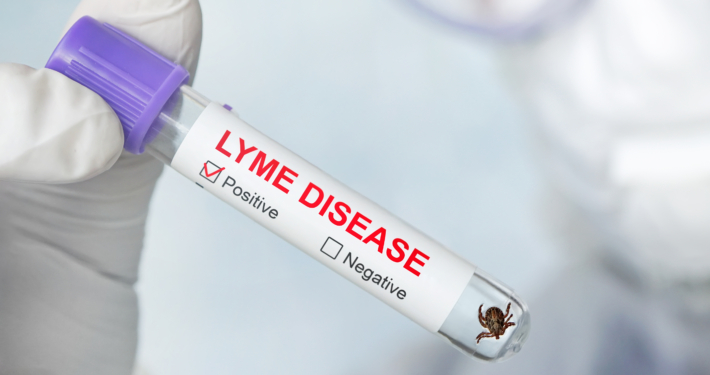The Basics of Lyme Disease: Symptoms, Treatment, and Prevention
Ticks are a common sight in outdoor environments, but their small size belies the danger they pose. These tiny parasites can carry a variety of diseases, including Lyme disease, which affects an estimated 30,000 people each year in the United States alone. Knowing the basics of tick prevention and treatment is essential for anyone who spends time outdoors, particularly workers who may be exposed to ticks on a regular basis. In this article, we will explore the importance of avoiding ticks and understanding the signs, symptoms, and treatment options for Lyme disease..
By: Richard Rich
Introduction
Lyme disease is a tick-borne illness that is caused by the bacterium Borrelia burgdorferi. It is most commonly transmitted to humans through the bite of infected blacklegged ticks, also known as deer ticks. Lyme disease is a serious condition that can cause a range of symptoms and complications, but with prompt treatment and prevention measures, it can be effectively managed.
Symptoms
The symptoms of Lyme disease can vary from person to person, and not everyone will experience the same symptoms or at the same intensity. However, some common symptoms of Lyme disease include:
- A red, circular rash that resembles a bull’s-eye (known as erythema migrans)
- Fatigue
- Fever
- Headache
- Muscle and joint aches
- Swollen lymph nodes
In some cases, Lyme disease can also cause more severe symptoms, such as:
- Severe headaches and neck stiffness
- Joint pain and swelling
- Facial paralysis (usually on one side)
- Heart palpitations and dizziness
- Nerve pain and tingling in the hands and feet
While the symptoms of Lyme disease can vary, if left untreated, the disease can progress and cause more severe complications. Three of the most serious complications include Lyme carditis, neurologic Lyme disease, and Lyme arthritis.
Lyme Carditis
Lyme carditis is a heart condition that affects a small percentage of people with the disease. In Lyme carditis, the bacteria that cause Lyme disease infect the tissues of the heart, causing inflammation that can interfere with the normal movement of electrical signals in the heart. This can lead to heart palpitations, chest pain, and in rare cases, heart failure.
Neurologic Lyme Disease
Another complication of Lyme disease is neurologic Lyme disease, which occurs when the bacteria invade the nervous system. Symptoms of neurologic Lyme disease can include facial palsy (droop), numbness or tingling in the hands or feet, and meningitis (inflammation of the membranes surrounding the brain and spinal cord). In severe cases, neurologic Lyme disease can cause paralysis and even death.
Lyme Arthritis
Lyme arthritis is a condition that causes joint pain and swelling. This arthritis typically affects the large joints, such as the knees, and can cause long-term damage if not treated promptly.
Importance of Seeking Medical Attention
It’s important to note that not everyone who contracts Lyme disease will develop all of these symptoms. In fact, some people may not develop any symptoms at all. Additionally, some symptoms may not appear until several weeks or even months after the initial tick bite, making diagnosis and treatment more challenging.
If you suspect that you may have been bitten by a tick or are experiencing symptoms of Lyme disease, it’s important to seek medical attention as soon as possible. Early treatment with antibiotics can help prevent the disease from progressing and causing more severe symptoms. Don’t hesitate to seek medical attention if you think you may have been exposed to Lyme disease.
Treatment
If you suspect that you have been bitten by a tick or have symptoms of Lyme disease, it is important to seek medical attention promptly. Your doctor may perform a physical exam, ask about your symptoms and medical history, and order blood tests to confirm a diagnosis. Here are some common treatment options for Lyme disease:
Antibiotics
Lyme disease is typically treated with antibiotics, such as doxycycline, amoxicillin, or cefuroxime. Antibiotics are often effective in treating Lyme disease, especially when started early in the course of the illness. The length and type of treatment will depend on the severity of the illness and other factors, such as your age and medical history.
Alternative Therapies
In addition to antibiotics, some people with Lyme disease may choose to use alternative therapies, such as herbal supplements, acupuncture, or hyperbaric oxygen therapy. However, it is important to discuss these options with your doctor before trying them, as some alternative therapies may not be effective and may even be harmful.
Chronic Lyme Disease
While antibiotics are effective in treating Lyme disease, some people may continue to experience symptoms even after treatment. This is known as chronic Lyme disease, and it can be difficult to treat. To prevent chronic Lyme disease, it is important to seek medical attention promptly if you suspect that you have been bitten by a tick or have symptoms of Lyme disease. Early diagnosis and treatment are key to preventing long-term complications.
Prevention
Preventing Lyme disease starts with avoiding tick bites. Some ways to prevent tick bites include:
- Wearing long pants and sleeves when spending time outdoors
- Using an insect repellent that contains at least 20% DEET or other EPA-approved ingredients, such as IR3535, picaridin, or oil of lemon eucalyptus
- Performing tick checks after spending time outdoors, and removing any ticks promptly with tweezers
- Creating a tick-free zone around your home by mowing the lawn, removing leaf litter, and keeping woodpiles and other potential hiding spots away from the house
Conclusion
Lyme disease is a serious illness that can cause a range of symptoms and complications, but with proper treatment and prevention measures, it can be effectively managed. If you suspect that you may have Lyme disease or have been bitten by a tick, seek medical attention promptly. And remember, taking steps to prevent tick bites is the best way to protect yourself and your family from Lyme disease.
Hopefully, this blog post provides you with a basic understanding of Lyme disease and the steps you can take to prevent and manage it. Remember to always seek medical attention if you suspect that you may have been exposed to Lyme disease and take precautions to protect yourself from tick bites when spending time outdoors.







